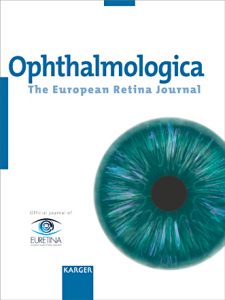AFLIBERCEPT INDUCES FASTER VASCULAR OUTGROWTH IN RETINOPATHY OF PREMATURITY PATIENTS
Infants with retinopathy of prematurity (ROP) treated with aflibercept have a faster vascular outgrowth rate (VOR) but a wider retinal vascular development border (RVDBM) than those treated with bevacizumab. In 51 eyes of 27 infants who received aflibercept, VORs measured in between two sequential follow-up fluorescein angiograms (FA) were significantly higher both in nasal (p=0.042) and temporal sides (p=0.033) than in 38 bevacizumab-treated eyes of 19 infants. However, the ratios between the distance from the centre of the disc to the RVDB and the distance from the centre of the disc to the centre of the macula were significantly higher in the bevacizumab group in the first FA and the second FA examinations.
A Vural et al, “Comparison of Vascular Outgrowth Rate and Retinal Vascular Development Border after Intravitreal Injection of Aflibercept or Bevacizumab to Treat Retinopathy of Prematurity”, Ophthalmologica 2019, Volume 243, Issue 2.
CENTRAL CHOROIDAL THICKNESS LOWER IN CENTRAL RETINAL VEIN OCCLUSION DME PATIENTS
Anti-vascular endothelial growth factor (anti-VEGF) therapy appears to reduce central choroidal thickness (CCT) in patients with central vein occlusion-related macular oedema and the effect may be magnified in those with systemic hypertension, according to a new study. In 27 CRVO patients with macular oedema who underwent anti-VEGF treatment, CCT was significantly lower among 17 hypertensive patients than in the 10 normotensive patients but also gradually became thinner with additional drug injections in all of the patients. In addition, at final visit the mean CCT in HT patients was significantly lower (209.0µm) than in non-HT patients (256.1 µm).
T Kida et al, “Long-Term Follow-Up Changes of Central Choroidal Thickness Thinning after Repeated Anti-VEGF Therapy Injections in Patients with Central Retinal Vein Occlusion-Related Macular Edema with Systemic Hypertension” Ophthalmologica 2020, Volume 243, Issue 2.
SD-OCT PREDICTS OUTCOME OF ANTI-VEGF TREATMENT IN CNV SECONDARY TO MYOPIA
Spectral-domain optical coherence tomography (SD-OCT) can help predict outcome of anti-VEGF treatment for myopic choroidal neovascular neovascularisation (mCNV) according to an investigator-led prospective trial. In 20 treatment-naïve patients who received intravitreal injections of ranibizumab, better baseline visual acuity (VA), lower spherical equivalent, better inner/outer segment line and external limiting membrane integrity showed a significant positive effect on BCVA outcome. Less fluctuation in CRT (worst minus best CRT) indicated better BCVA at 12 months.
M Guichard et al, “Outcome Predictors of SD-OCT-Driven Intravitreal Ranibizumab in Choroidal Neovascularization due to Myopia”, Ophthalmologica 2019, Volume 243, Issue 2.

